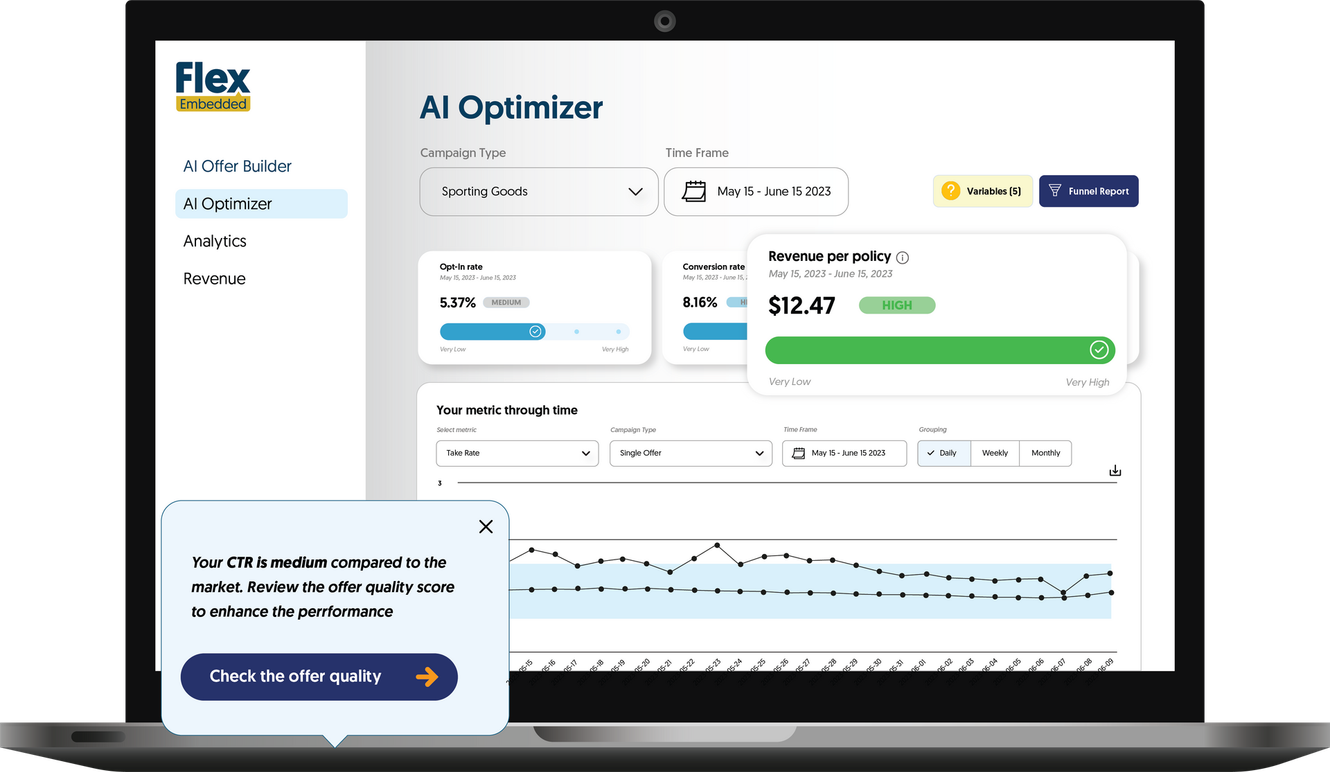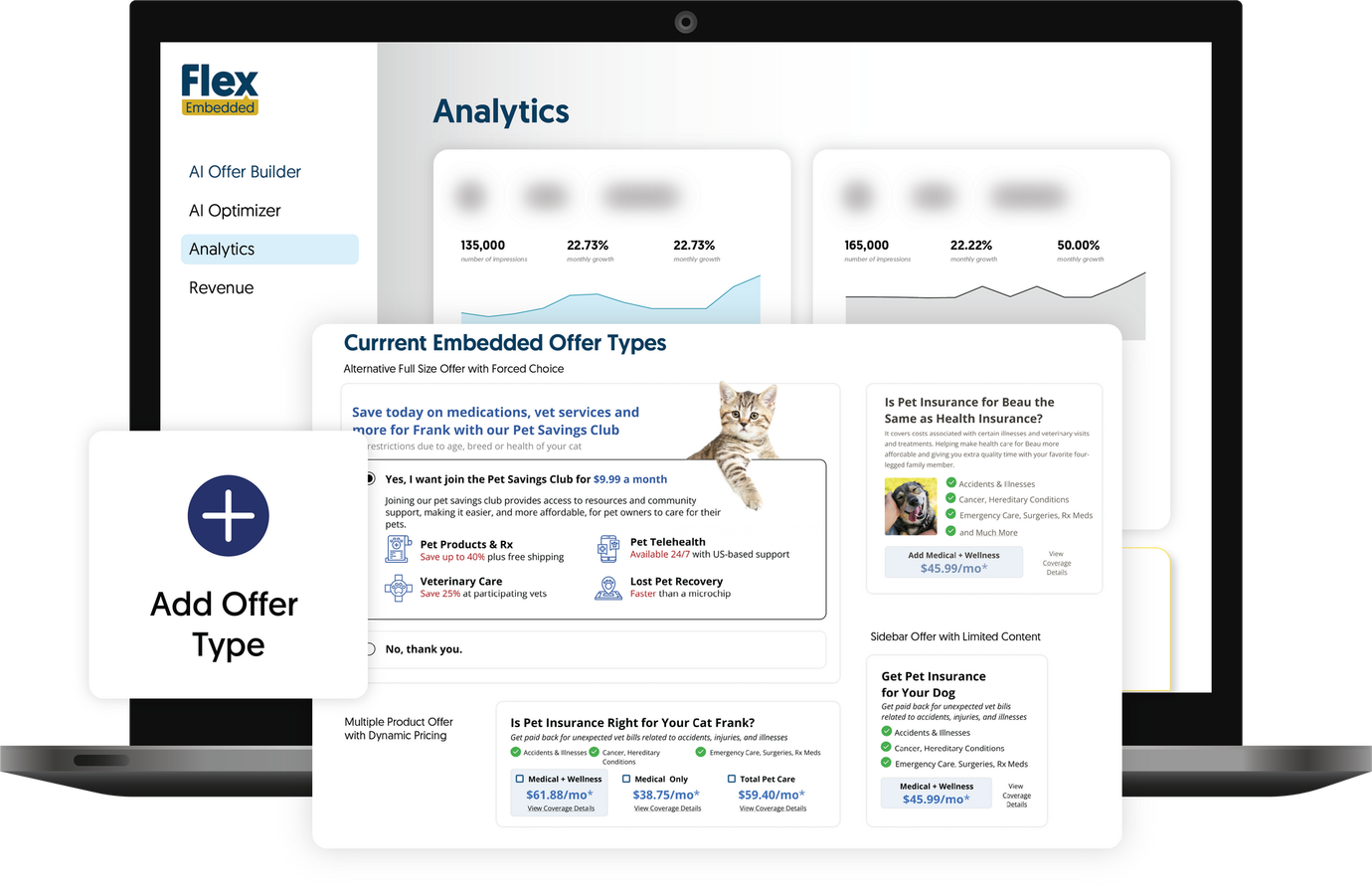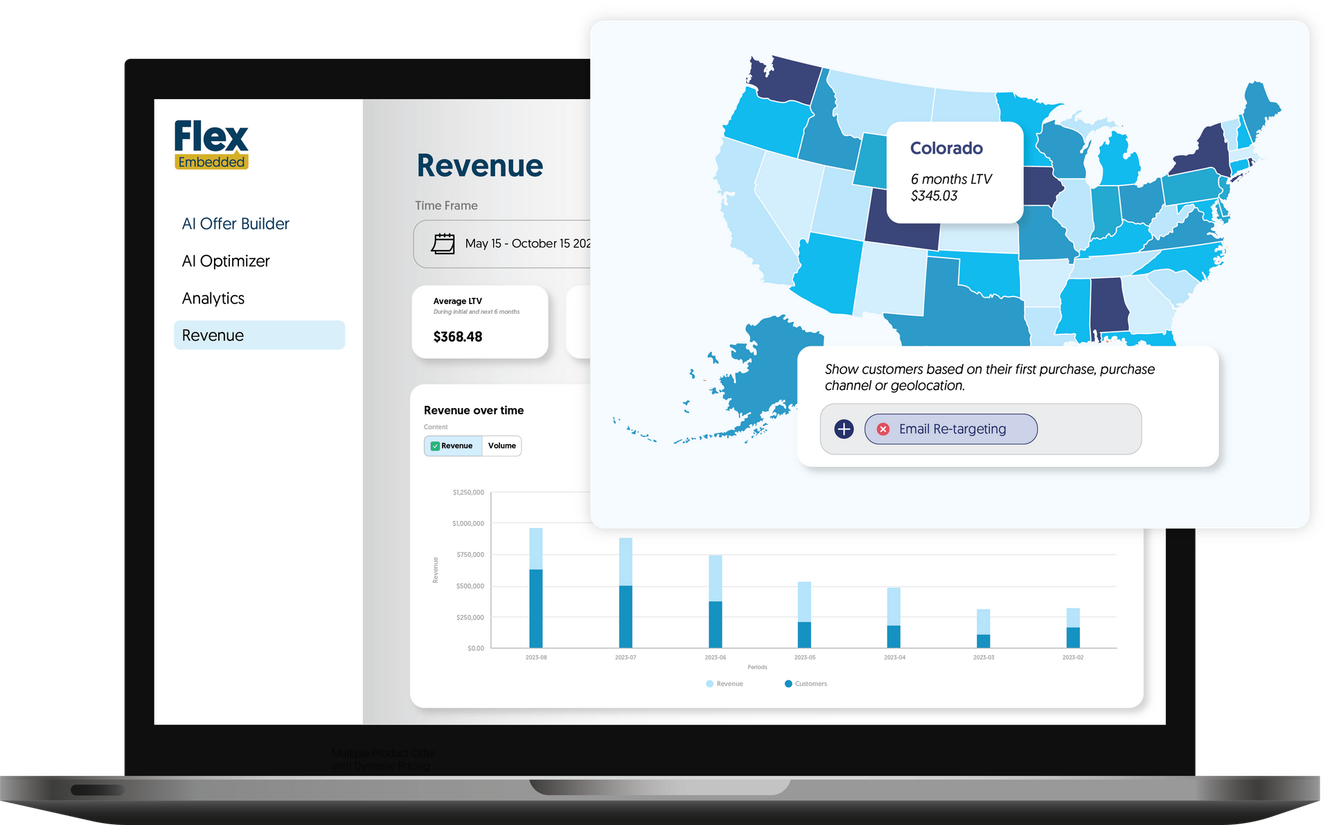Maximize Profits with AI-Driven Embedded Insurance Transforming Data into Results
Instant Personalization and Optimization
Flex Embedded's AI enhanced system swiftly tailors insurance offers to customer needs, increasing opt-in rates.
Additionally, we test and optimize offers in real-time, refining them based on customer response. This ensures continuous product improvement and relevance.

Enhanced Customer Satisfaction
Our AI powered approach surpasses traditional methods by creating offers through data-driven personalization, real-time optimization, scalable efficiency, and improved risk assessment.
These features ensure offers are more relevant, timely, and appropriately priced, enhancing customer satisfaction and business performance.

Affordable for Customers, Profitable for You
Tailored coverage and dynamic pricing benefit customers, while upselling opportunities and operational efficiency boost your profits. Experience increased customer loyalty and gain strategic insights.

Implement Quickly and Start Selling
Our agile approach ensures seamless integration of our innovative solutions into our partners' offerings. With a customer-centric focus, we deliver value and meet the evolving needs of our clients.

$1.4B Annual GWP
revenue generated for businesses we have worked with

Slide title
Write your caption hereButton
Slide title
Write your caption hereButton
Slide title
Write your caption hereButton
Slide title
Write your caption hereButton
Slide title
Write your caption hereButton

Slide title
Write your caption hereButton
Slide title
Write your caption hereButton
Slide title
Write your caption hereButton
Slide title
Write your caption hereButton
Slide title
Write your caption hereButton

Slide title
Write your caption hereButton
Slide title
Write your caption hereButton
Slide title
Write your caption hereButton
Slide title
Write your caption hereButton
Slide title
Write your caption hereButton

Slide title
Write your caption hereButton
Slide title
Write your caption hereButton
Slide title
Write your caption hereButton
Slide title
Write your caption hereButton
Slide title
Write your caption hereButton
Slide title
Write your caption hereButton

Slide title
Write your caption hereButton
Slide title
Write your caption hereButton
Slide title
Write your caption hereButton
Slide title
Write your caption hereButton
Slide title
Write your caption hereButton

Slide title
Write your caption hereButton
Slide title
Write your caption hereButton
Slide title
Write your caption hereButton
Slide title
Write your caption hereButton
Slide title
Write your caption hereButton

Slide title
Write your caption hereButton
Slide title
Write your caption hereButton
Slide title
Write your caption hereButton
Slide title
Write your caption hereButton
Slide title
Write your caption hereButton
This is a paragraph. Writing in paragraphs lets visitors find what they are looking for quickly and easily.
This is a paragraph. Writing in paragraphs lets visitors find what they are looking for quickly and easily.
APIs
Our custom APIs for embedded insurance allows for seamless integration of insurance products into any platform, providing a more convenient and accessible experience for customers.
Widgets
Our embedded insurance widgets allow for the integration of insurance products into existing websites or applications, making it easier for customers to purchase from a familiar interface.
Microsites
Our targeted insurance microsites allow for the creation of targeted and personalized landing pages that focus on specific insurance products, making it easier for customers to find and purchase the coverage they need.
Make
more revenue
with each sale



Embedded Insights
Stay up-to-date on key trends and insights
